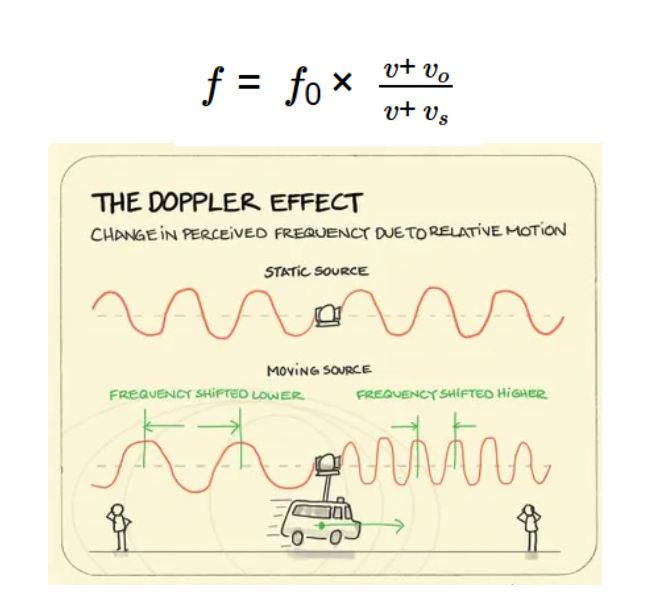 Home
Home
 Back
Back

Definition: This calculator computes the observed frequency of a wave due to the relative motion between the source and observer, using the Doppler Effect formula. The Doppler Effect describes the change in frequency of a wave (e.g., sound, light) when the source and observer move relative to each other.
Purpose: It is used in physics, engineering, and astronomy to analyze frequency shifts, with applications in radar, sonar, medical imaging, and studying celestial motion, inspired by tools like Omni Calculator’s Doppler Effect Calculator.
The calculator uses the Doppler Effect formula for waves:
Unit Conversions:
Details: Calculating the Doppler Effect is crucial for understanding wave frequency shifts in radar (e.g., speed guns), astronomy (e.g., redshift of stars), medical imaging (e.g., Doppler ultrasound), and acoustics (e.g., pitch changes of moving vehicles).
Tips: Enter the emitted frequency, wave speed, source velocity, and observer velocity with their units (e.g., frequency in Hz, velocities in m/s). Specify the direction of motion for the source and observer (towards or away). Ensure the denominator \( v + v_s \) is positive to avoid division by zero. Click “Calculate” to get the observed frequency in the selected unit. The result uses scientific notation for very small (< 0.0001) or large (> 100,000) values.
Given (High Frequency): Emitted Frequency = 5 GHz, Wave Speed = 343 m/s (sound in air), Source Velocity = 20 m/s (towards observer), Observer Velocity = 0 m/s.
Calculation: Convert units: \( f_0 = 5 \times 10^9 \, \text{Hz} \), \( v = 343 \, \text{m/s} \), \( v_s = -20 \, \text{m/s} \) (towards, so negative), \( v_o = 0 \, \text{m/s} \).
- \( f = 5 \times 10^9 \times \frac{343 + 0}{343 + (-20)} = 5 \times 10^9 \times \frac{343}{323} \approx 5.309597 \times 10^9 \, \text{Hz} \)
- In GHz: \( f = 5.309597 \times 10^9 \times (1/10^9) \approx 5.309597 \, \text{GHz} \)
- In MHz: \( f = 5.309597 \times 10^9 \times (1/10^6) \approx 5309.597 \, \text{MHz} \)
Result (> 100,000 for Hz): 5.309597e+09 Hz, 5.310 GHz, 5309.597 MHz.